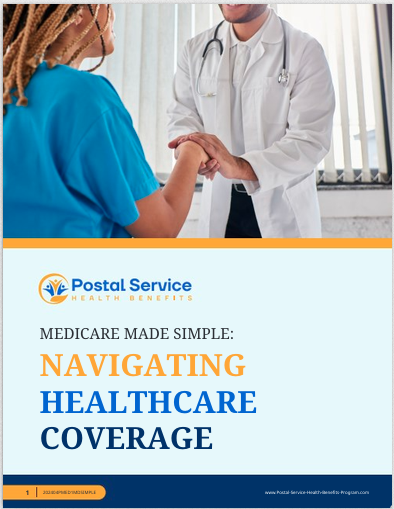Key Takeaways:
- The Postal Service Health Benefits (PSHB) program brings significant changes to healthcare for USPS workers and retirees.
- USPS employees and retirees must understand the new postal-only health plans to make informed decisions about their future coverage.
Major USPS Healthcare Overhaul: What You Need to Know About the New Postal-Only Plans
The U.S. Postal Service (USPS) is undergoing a major healthcare overhaul, affecting both active employees and retirees. This shift is primarily driven by the creation of the Postal Service Health Benefits (PSHB) program, which introduces new postal-only plans under the Federal Employees Health Benefits (FEHB) umbrella. If you’re a USPS employee or retiree, it’s essential to stay informed about these changes to ensure that you have the right coverage for your healthcare needs.
The Introduction of Postal Service Health Benefits (PSHB)
The PSHB program is a key part of the USPS’s efforts to streamline and enhance healthcare benefits for its workforce. It was designed in response to the Postal Service Reform Act of 2022, which aimed to reduce the financial burden on the USPS and bring healthcare benefits in line with other federal employees. This overhaul means that postal workers and retirees will have their own set of health insurance options, separate from the larger Federal Employees Health Benefits (FEHB) program.
This change is expected to take full effect in January 2025, and it will impact the healthcare choices available to USPS workers and retirees. Understanding the new postal-only plans and how they differ from existing FEHB options is crucial for making the right decisions about your healthcare coverage.
What Makes the PSHB Different?
Under the new system, the PSHB program will offer health plans exclusively for USPS employees and retirees. These plans are designed to cater to the specific healthcare needs of postal workers, ensuring that they receive the best possible coverage while also helping the USPS manage its financial obligations.
One of the significant differences between the PSHB and the traditional FEHB plans is the alignment with Medicare. Once the PSHB is fully implemented, Medicare integration will become a requirement for eligible retirees aged 65 and older. This means that USPS retirees who are eligible for Medicare will need to enroll in Medicare Parts A and B to receive full coverage under the PSHB plans.
Medicare Integration for Retirees
For USPS retirees, one of the most important aspects of the PSHB program is how it integrates with Medicare. Beginning in 2025, retirees who are 65 and older will be required to enroll in Medicare Parts A and B to maintain their PSHB coverage. This integration is designed to reduce overall healthcare costs for the USPS by shifting some of the financial burden to Medicare.
If you’re nearing retirement or already retired, it’s essential to plan ahead and ensure that you understand your Medicare options. Failure to enroll in Medicare Parts A and B when you’re eligible could result in higher out-of-pocket costs or even a loss of coverage under the PSHB program.
Key Points to Consider for Medicare Enrollment:
- Timing Matters: You need to sign up for Medicare Parts A and B during your Initial Enrollment Period (IEP) to avoid penalties.
- Coordination of Benefits: PSHB plans will work alongside Medicare to provide comprehensive coverage, reducing the need for additional supplemental plans.
- Medicare Advantage Option: Some retirees may have the option to enroll in a Medicare Advantage plan, but it’s important to understand how these plans interact with PSHB coverage.
Impact on Current Employees
Active USPS employees will also experience changes under the PSHB program. While the overall structure of healthcare benefits will remain similar to what they currently receive under the FEHB, the postal-only plans are expected to offer more tailored coverage. These changes could affect everything from premium contributions to out-of-pocket costs, so it’s crucial for current employees to review the new options carefully.
Additionally, USPS employees should be aware that as they approach retirement, they will need to consider how Medicare enrollment will impact their healthcare benefits. Planning ahead can help ensure a smooth transition from employee coverage to retiree benefits under the PSHB program.
What Employees Need to Know:
- New Plan Options: The postal-only plans will be designed to better meet the needs of USPS employees, but you will need to compare options carefully.
- Medicare Considerations: As you near retirement age, you should familiarize yourself with Medicare enrollment requirements to avoid gaps in coverage.
- Costs and Coverage: Pay attention to any changes in premium contributions, deductibles, and copays, as these may differ from your current FEHB plan.
Navigating the Transition
The transition to the PSHB program will take time, and USPS employees and retirees will need to stay informed throughout the process. The USPS and the Office of Personnel Management (OPM) are expected to provide detailed information about the new postal-only plans as the program’s implementation date approaches.
Here are a few tips to help you navigate the transition smoothly:
1. Stay Updated on Plan Announcements
The USPS will provide updates about the available postal-only plans under the PSHB program, including details about benefits, costs, and how the plans integrate with Medicare. It’s essential to keep an eye on official communications to ensure you’re getting the most accurate and up-to-date information.
2. Review Your Current Health Coverage
Take the time to assess your current health insurance coverage and how it compares to the upcoming postal-only plans. This is particularly important if you’re close to retirement or already retired. Understanding the differences between your existing FEHB coverage and the new PSHB options will help you make informed decisions.
3. Prepare for Medicare Enrollment
If you’re nearing 65 or already eligible for Medicare, now is the time to review your Medicare options and how they will work with the PSHB program. Consider speaking with a licensed insurance agent who can help you understand the Medicare enrollment process and how to coordinate your benefits.
4. Attend USPS and OPM Information Sessions
Both the USPS and OPM are expected to offer informational sessions and webinars to help employees and retirees understand the PSHB program and the transition process. Make sure to attend these events to get your questions answered and stay on top of important deadlines.
How Retirees Can Maximize Their PSHB Coverage
For USPS retirees, the shift to the PSHB program offers an opportunity to review their healthcare needs and make adjustments where necessary. While the integration with Medicare may seem daunting at first, it can actually provide more comprehensive coverage than retirees may have under their current FEHB plans.
Retirees should take advantage of the opportunity to:
- Coordinate with Medicare: By integrating Medicare Parts A and B with your PSHB plan, you can reduce out-of-pocket costs and ensure you have full healthcare coverage.
- Consider Long-Term Needs: As you plan for retirement, think about how your healthcare needs might change over time. The PSHB program offers coverage options that are designed to provide support for a wide range of medical services, making it easier to manage chronic conditions or unexpected health issues.
- Consult with Experts: Licensed insurance agents and Medicare advisors can help you navigate the complexities of the PSHB program and Medicare integration, ensuring that you maximize your benefits.
Important Deadlines to Keep in Mind
As with any major program overhaul, there are critical deadlines that USPS workers and retirees need to be aware of. While the PSHB program officially begins in January 2025, there will be several key milestones leading up to that date, including:
- Plan Selection Period: In the fall of 2024, USPS employees and retirees will have the opportunity to select their new postal-only plans.
- Medicare Enrollment Deadlines: If you’re turning 65 in 2024 or 2025, be sure to mark your calendar for your Medicare Initial Enrollment Period.
Missing these deadlines could result in a lapse in coverage or higher healthcare costs, so it’s crucial to stay organized and plan ahead.
Planning for Your Healthcare Future
The USPS healthcare overhaul marks a significant shift in how postal workers and retirees will manage their health insurance moving forward. By understanding the new postal-only plans under the PSHB program and how they integrate with Medicare, you can make informed decisions that will protect your health and financial well-being.
Stay proactive, review your options, and take advantage of the resources available to USPS employees and retirees during this transition. The more informed you are, the better prepared you’ll be to navigate the changes ahead.






